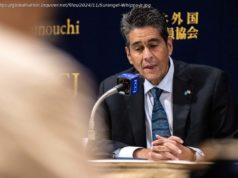Good thing you didn’t short China.
Good thing you didn’t short China.
China’s stimulus measures have helped the market all year. Wall Street loves it because it’s money in the bank. But Beijing think it’s not enough. After a roughly $6 billion reverse repo deal that has the central bank propping up the A-shares, China’s National Development and Reform Commission is circulating a proposal for auto and consumer goods stimulus. Most of the stimulus this year has been loosening credit requirements and lifting some restrictions on real estate investing.
It seems like somebody in Beijing thinks China’s economy isn’t as good as it looks. Recent economic data suggests China was on the mend. Only the perennial China bears itching for a hard landing thought that was hogwash.
The new stimulus proposal suggests they have a point. China is not firing on all four cylinders.
The proposed stimulus package is said to be smaller than the last two consumption stimulus plans – the first back in 2009 during the Great Recession and the second in 2015.
“Sales of auto and home appliances will benefit from the stimulus in 2019 and 2020, and a rebound in auto and home appliance sales growth should help to deliver a real and more sustainable growth recovery,” says Ting Lu, head China economist at Nomura in Hong Kong.
The 2015 stimulus for auto sales lasted almost two years, ending around 2017. Two years later, China is at it again. The country has literally dozens of auto manufacturers and needs to consolidate. Instead, stimulus will keep many of these carmakers afloat.
A better way to look at auto stimulus is who it protects along the supply chain. Auto production involves a variety of inputs from other sectors, including steel, metals, fuels, plastics, rubber, glass and electronics. In 2017, the gross industrial output of the auto sector was 3.6 trillion yuan, or around $54 billion. The auto sector contributed around 4% to China’s GDP that year, a stimulus year.
According to the China Passenger Car Association (CPCA), growth of passenger car sales dropped 11.7% in March after dropping 9.7% in the first two months of the year versus 2018 sales numbers. First quarter car sales tanked 10.4% in the first, after tanking 16.9% in the fourth quarter.
Based on weekly CPCA sales data from April 1-12, Nomura estimates April auto sales growth is down 33.8% year over year, weaker than the -11.7% reading in March. They think the ongoing slowdown was due to the stimulus package designed to get more Chinese into cars as recently as 2015-17.
The other side of the NDRC stimulus proposal is for consumers of home electronics and appliances.
Much of the slowdown in that sector is due to strict real estate regulations that are making it harder for people to buy second, third, and even fourth homes. Housing is a savings account in China, but Xi Jinping doesn’t want it to be.
It’s hard to quantify the impact of housing sales on home goods like microwave ovens and television sets, says Ting Lu. “That said, the stimulus will have some positive impact, and will surely boost sentiment.”
The NDRC proposal is currently making the rounds in Beijing among lawmakers.
But Wait! There’s More!
On Wednesday, Premier Li Keqiang called for more flexibility in using monetary policy to spur lending. Remember that Keqiang had called on state banks to lend more money to small and mid-sized businesses during the March “Two Sessions” meeting in Beijing. Now he is at it again.
A new reserve requirement ratio is in the making.
Considering the recent increase in corporate bond yields and overnight lending rates between banks, the central bank will likely inject even more liquidity into the system in the weeks ahead, analysts believe. The timing of this is uncertain.






